
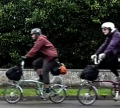
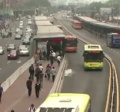
In the last few hours I’ve come across three videos that you don’t want to miss.
The first is the latest from Streetfilms. In their first-ever foray into Asia, it focuses on the bustling metropolis of Guangzhou, China. One of the fastest growing cities in the world, Guangzhou is “winning the future” with the most inspiring example of Bus Rapid Transit I have ever seen.
According to Streetfilms, the Guangzhou BRT system opened in February 2010 and it now carries 800,000 passengers a day, “seamlessly connecting riders to both the metro system and the city’s new bike-share network.” BRT is fascinating to me and it seems to be a big success whenever it’s done right. Trouble is, in America BRT seems to have taken a back seat to rail transit (which is a lot more expensive and takes years to implement). My gut says there’s a lot of cultural bias and politics wrapped into that trend. Maybe China’s success will raise some eyebrows…
Bus Rapid Transit in Guangzhou, China from Streetfilms on Vimeo.
The next video will inspire you in a different way. It comes from our friends Russ Roca and Laura Crawford. As we shared last month, they’re planning a new trip. Today they took things to the next level with the release of this awesome video about their vision and how they plan to “redefine the American road trip.”
And just when you thought you could go back to your to-do list, I present the latest spoof on the spoof that is Portlandia. Andrea and Aaron from Pedal Nation (their big PDX Bicycle Show is coming next weekend!) have done the infamous “Put a bird on it” sketch justice with “Put a bike on it.” Hilarious…


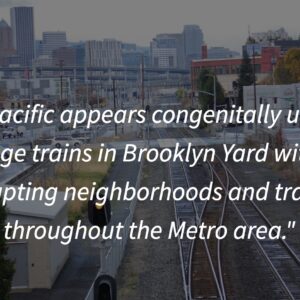
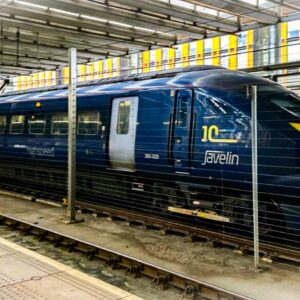
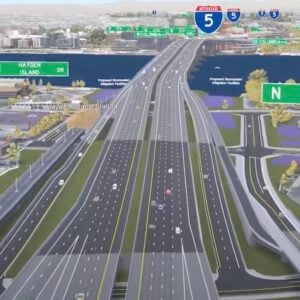
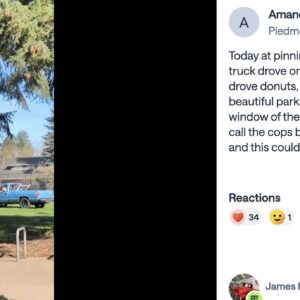
Thanks for reading.
BikePortland has served this community with independent community journalism since 2005. We rely on subscriptions from readers like you to survive. Your financial support is vital in keeping this valuable resource alive and well.
Please subscribe today to strengthen and expand our work.
Hope the Streetfilms clip gets the traction it deserves. This would be so much simpler and affordable for most urban areas of the US than existing/planned options.
The visibly bad air quality in the clips of Guangzhou must be a real incentive to build a transit system, but the design of the one they’ve built appears to be a real incentive for people to USE it, and that is impressive.
Watching people streaming onto and off of nice modern buses in well-ordered stations makes me wonder, yet again, what happened to Tri-Met. (I know: light rail happened.)
I take issue with your comments on BRT vs. LRT. You should clarify that the capital costs of LRT are more expensive, but that operating costs are lower. Now that Portland has a good-sized LRT network, it makes sense to “add new spokes” onto the existing system, as opposed to pursuing a new BRT system.
Ottowa, considered an example of successful BRT in North America, is looking at converting to LRT:
http://www.thetransportpolitic.com/2010/05/17/ottawa-closer-than-ever-to-replacing-bus-rapid-transit-with-light-rail/
BRT has some great applications, Eugene’s EMX is a good example. Freeway capacity between Eugene and Springfield was not a problem, so it was cheaper to build BRT infrastructure in the downtown areas, instead of building new LRT infrastructure for the entire line.
A BRT could also be a “spoke” to the existing LRT network. A main advantage of LRT over BRT is capacity, but that advantage cannot be used with Portland’s surface LRT system because short city blocks limit the trains to 2 cars each. Also, the Steel Bridge is a rail bottleneck. Buses could use any bridge.
I hope trimet is looking at BRT for the Barbur/99 corridor. All those viaducts must cost $$$ to replace with light rail supporting structures. Especially if we just gave dedicated travel lanes to buses (with some sort of camera enforcement?)
BRT will be one of the options looked at. I’m not sure how much cheaper it will be. One of the requirements of the Barbur/99 project will be that you cannot take car lanes away, it is a state highway. If we want something faster than the #12, they are going to be adding a ROW for transit.
I would peg this community to be environmentally conscious. So it surprises me that everyone seems to be arguing for diesel-powered BRT vs. local-emission free LRT. Is this because they have to bury some steel in the asphalt for LRT?
For me it’s the opportunity cost along that particular transit corridor. There are tons of viaducts and all of them would need replaced for any sort of LRT. Look under them sometime, nearly all are wood. Plus with BRT it would go all the way to sherwood with an easy future extension to Newberg. I can’t imagine LRT covering the same distance.
I’m really surprised to hear that eliminating traffic lanes is out of the question for the Barbur/99 corridor. Curious where they’re planning on getting the RoWs then. There really isn’t any sort of parking to remove and all the land seems prohibitively expensive. Could you point me towards the Metro documents where they say that the project will be accomplished without removing traffic lanes? Thanks.
They should be able to find some room between Barbur and I-5 in a lot of sections. Unfortunately, they may have to build a lot of aerials, similar to LINK up in Seattle:
http://farm3.static.flickr.com/2540/3736112328_dd0c211918_o.jpg
The supports would occupy the middle turn lane, but would still allow cars to turn in most areas. Expensive solution (just look at the per-mile cost for LINK), but the options are limited.
Anne: you hit the nail on the head.
Hey, three really impressive video clips! Thanks for including us among them.
I do think the LRT vs BRT debate is one that should always be had with civility. Too often it breaks down into screaming matches and I have seen past Streetsblog/films posts that go in to the hundreds. The thing is that BRT can be implemented fast but yes you are relying on a system that requires removing car lanes which is usually not politically possible, LRT can be a really long, expensive process and in some cases doesn’t move people any more quickly. Both sides can argue the long-term numbers.
But the truth is they can both be great options. In NYC we do not have the $$$ or political will to tackle any more subway lines (2nd Avenue subway, I might finally see in my lifetime) BUT we could build some really nice BRT lines that shuttle people from places in outer boros to subway stations or transfer points.
BRT might not work in Portland, but it could work in NYC, Chicago and a host of U.S. cities. Jonathan is right there is a bias. And buses are frowned upon by many no matter how clean, how fast. I personally love both options and we should promote all methods of transit as feasible options to the private auto which is destroying our cities.
…PUT A BIRD ON IT!!
Vancouver, Washington’s transit agency, C-TRAN, is planning a BRT line that runs along the busy Fourth Plain corridor. It will intersect with the northern terminus of the CRC MAX line.
http://www.c-tran.com/brt_files/templates/brt.php
Not to be picky, but they are looking at several options from “full” BRT (dedicated lanes, pay before boarding, all door boarding,) to “BRT lite” (frequent service, stop improvements, and priority signals.) Of course, some of the things that make BRT lite have been implemented already, (and do help ridership,) but when you look at many of the bus lines in Portland, they are close to BRT lite already. Priority signals have been implemented for many (most?) major intersections on frequent service lines, (it isn’t that the signal turns green when the bus shows up, it just holds it if it is close.) And for instance before the Yellow line was built, the #5-Interstate bus on that route ran every 5 minutes at rush hour and had shelters at almost every stop. TriMet looked at full BRT for Interstate Ave, and then decided that it wasn’t any cheaper in the long run than running 400 person capacity trains, (especially when the route crosses the river eventually.) Don’t get me wrong, full BRT is great, but what C-Tran is looking at converting is currently a “minor” frequent service line by Portland standards. If they were converting something like the old TriMet #5, they’d be considering LRT (either as “MAX type” or “streetcar type” as an option,) like the city of Portland is considered for the #14-Hawthorne…
Put a bike and a bird on it.
The greatest benefit of LRT is the long term focus of the infrastructure. BRT infrastructure can easily be converted to HOV or other mode systems while LRT will always be a dedicated public mass transit route. If it is quick to implement it is quick to dismantle.